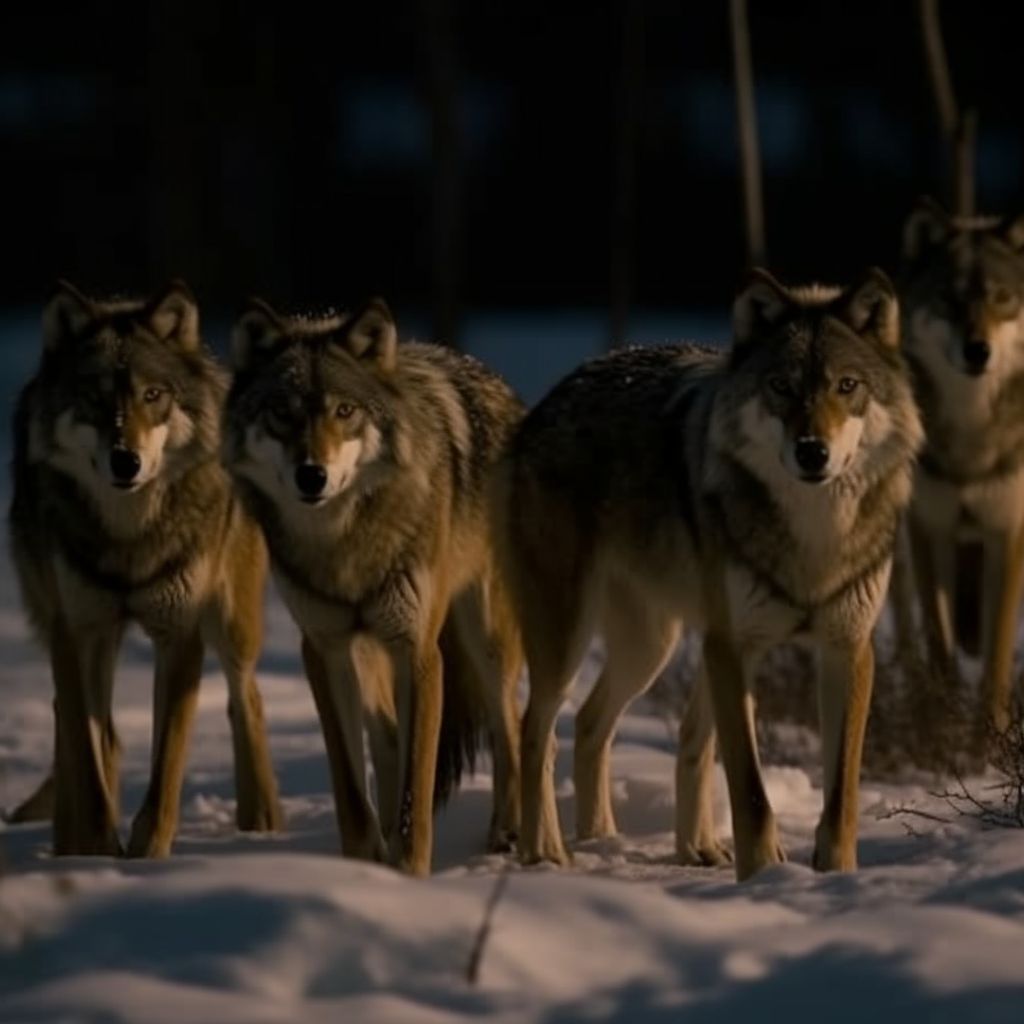Wolf
Wolves, being large, carnivorous canids, have long been a subject of fascination, fear, and reverence in Human culture. As apex predators, they have played an important role in ecosystems across the Northern Hemisphere. By the late 19th century, advances in technology and scientific understanding allowed for the creation of mechanical imitations of wolves, known as Auto Caninus steelies, which briefly captured the public's imagination before being discontinued.
Natural History of Wolves
Wolves (Canis lupus) are native to a wide range of habitats across North America, Europe, and Asia, including forests, grasslands, and tundra. They are social animals, living in packs led by an alpha pair, which consists of the dominant male and female. Wolves are known for their exceptional hunting skills and their ability to communicate through a variety of vocalizations, including howling, growling, and barking.
Wolves in Folklore and Mythology
Throughout history, wolves have been featured prominently in the folklore and mythology of various cultures. They have been viewed as symbols of strength, cunning, and loyalty, as well as embodiments of danger and the wild, untamed aspects of nature. In Native American lore, the wolf is often portrayed as a Teacher and a guide, while in European mythology, the wolf is sometimes associated with the darker aspects of human nature, as seen in the werewolf legends.
The Auto Caninus Steelies
In 1874, a groundbreaking innovation was introduced to the world: the first auto caninus steelies, mechanical creatures based on the form and behavior of wolves. These impressive creations were designed to mimic the appearance and movements of their living counterparts, featuring intricate mechanical components and advanced circuitry that allowed them to exhibit lifelike behaviors.
Unfortunately, the auto caninus steelies were plagued by issues related to their Mental Circuitry, which led to unpredictable and sometimes dangerous behavior. These problems were attributed to the haste with which the machines were developed and released to the public, as the manufacturers had been overly eager to capitalize on the fascination with wolves and the potential for new, cutting-edge technology. As a result, the auto caninus steelies were discontinued after just a few months on the market.
The Legacy of the Auto Caninus Steelies
Despite their short-lived production, the auto caninus steelies left a lasting impact on the public consciousness. They served as a cautionary tale about the potential dangers of pushing the boundaries of technology too quickly, and the importance of rigorous testing and development before introducing new inventions to the world.
Moreover, the auto caninus steelies highlighted the enduring allure of wolves in human culture and the ongoing fascination with these enigmatic creatures. While the auto caninus steelies may have been a fleeting phenomenon, they stand as a testament to the intersection of nature and technology in the late 19th century, and a reminder of the captivating power of the wild wolf.

